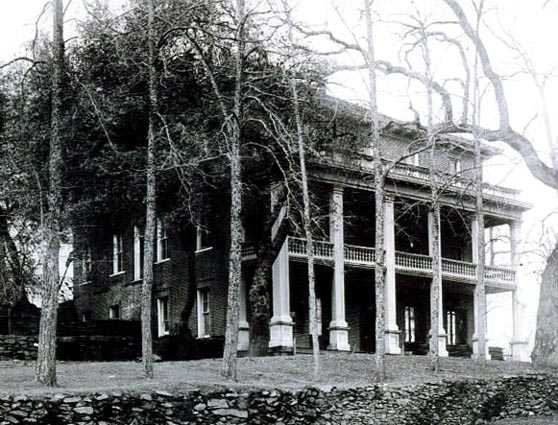 Construction on the handsome Bayley House began in 1861, after A.J. Bayley's first hotel in Pilot Hill, the Oak Valley House, was destroyed by an arsonist in May of that year. Prompted by this loss and rumors that the Central Pacific Railroad would soon be built through Pilot Hill, Bayley started construction on his biggest project.
Construction on the handsome Bayley House began in 1861, after A.J. Bayley's first hotel in Pilot Hill, the Oak Valley House, was destroyed by an arsonist in May of that year. Prompted by this loss and rumors that the Central Pacific Railroad would soon be built through Pilot Hill, Bayley started construction on his biggest project.
He had every reason to believe that the railroad would be routed through the trail that John C. Fremont surveyed, which ran past his property, because it had already been established as a freight haulers route. He knew that the "Big Four" railroad barons were seriously considering this Fremont Trail as the route for the railroad to take on its journey over the Sierras to become part of the first trans-continental railroad.
Enter Theodore Judah, a brilliant engineer who found that routing the railroad through Auburn and Dutch Flat would be easier and less expensive. His idea was eventually accepted, leaving Bayley with a massive Southern style estate in the middle of the rolling foothills of El Dorado County, one that would not realize its potential as an important and busy oasis for rail passengers.
Nevertheless, the fact remained that A.J. Bayley had designed and built one of the finest homes in the West.
The 10,000 square foot Bayley House was built with 22 rooms, including a ladies parlor to the right and a bar, and a grand ballroom on the second floor. The 300,000 bricks used in the construction were manufactured on the property, as was all the fine wood used in the house milled on the property. Rosewood and mahogany were imported from England. A double portico supported by six huge columns provided a shady retreat off the first and second floors where guests could relax and enjoy the view. A spectacular staircase wound from the double-door foyer to the second and third floors. To keep the house warm and inviting, it was outfitted with six fireplaces, two with marble insets, and underneath it all was a huge cellar where A.J. stored the products of his dairy, orchard and vineyards.
In addition to farming and running the hotel, A.J. and his son Alonzo ran a General Merchandise business out of the house during the 1880s. In May of 1862, A.J. held his 12th Annual Ball and Grand Opening for the enjoyment of the public.
